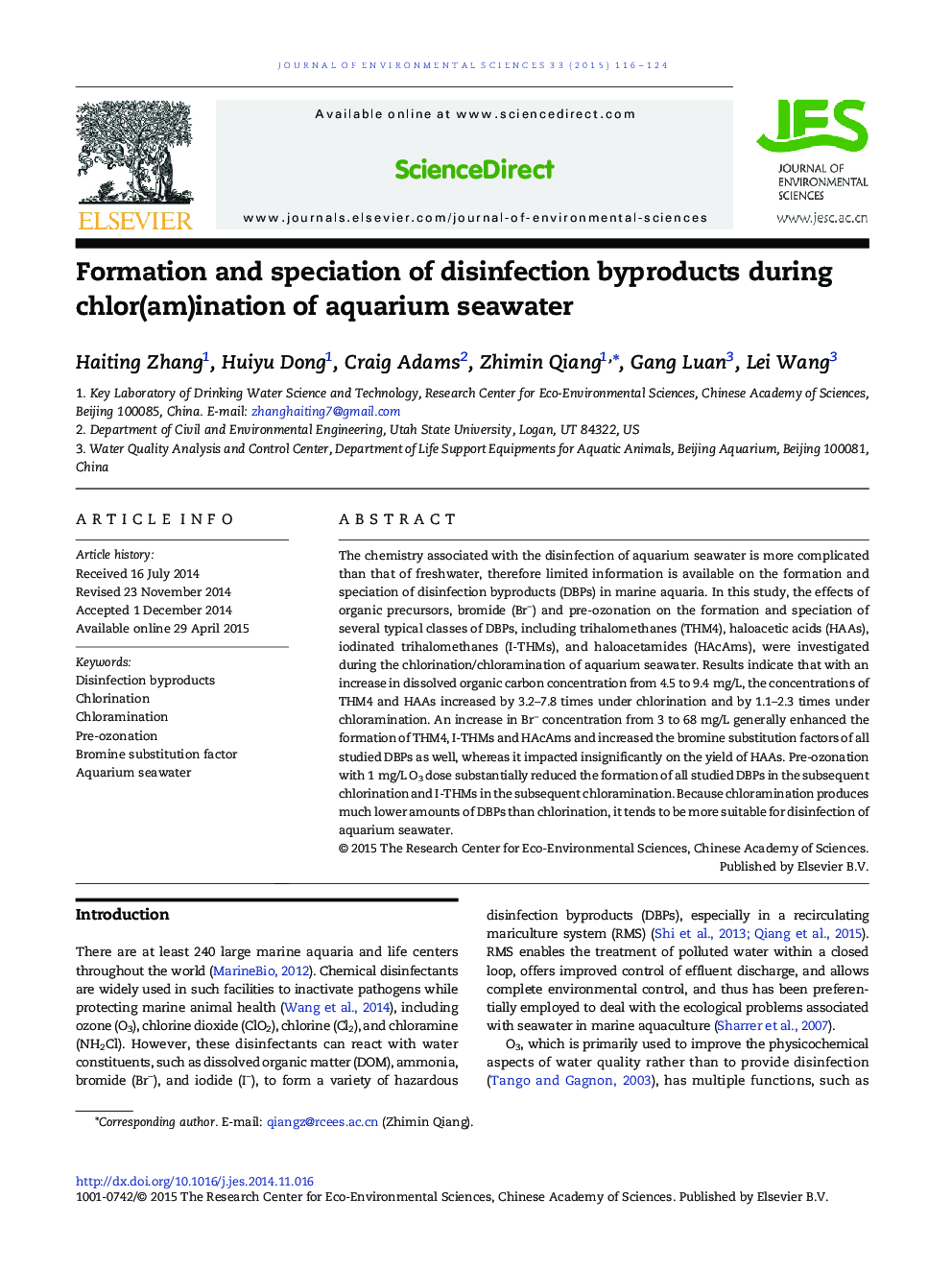| Article ID | Journal | Published Year | Pages | File Type |
|---|---|---|---|---|
| 4453983 | Journal of Environmental Sciences | 2015 | 9 Pages |
The chemistry associated with the disinfection of aquarium seawater is more complicated than that of freshwater, therefore limited information is available on the formation and speciation of disinfection byproducts (DBPs) in marine aquaria. In this study, the effects of organic precursors, bromide (Br−) and pre-ozonation on the formation and speciation of several typical classes of DBPs, including trihalomethanes (THM4), haloacetic acids (HAAs), iodinated trihalomethanes (I-THMs), and haloacetamides (HAcAms), were investigated during the chlorination/chloramination of aquarium seawater. Results indicate that with an increase in dissolved organic carbon concentration from 4.5 to 9.4 mg/L, the concentrations of THM4 and HAAs increased by 3.2–7.8 times under chlorination and by 1.1–2.3 times under chloramination. An increase in Br− concentration from 3 to 68 mg/L generally enhanced the formation of THM4, I-THMs and HAcAms and increased the bromine substitution factors of all studied DBPs as well, whereas it impacted insignificantly on the yield of HAAs. Pre-ozonation with 1 mg/L O3 dose substantially reduced the formation of all studied DBPs in the subsequent chlorination and I-THMs in the subsequent chloramination. Because chloramination produces much lower amounts of DBPs than chlorination, it tends to be more suitable for disinfection of aquarium seawater.
Graphical abstractFigure optionsDownload full-size imageDownload as PowerPoint slide
